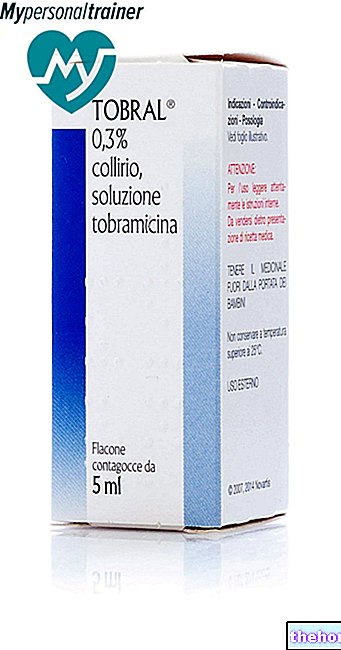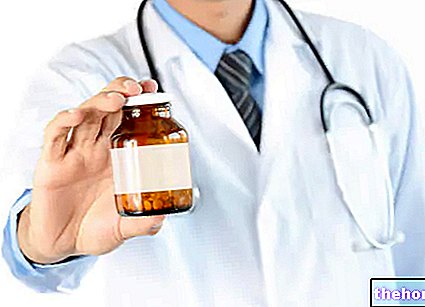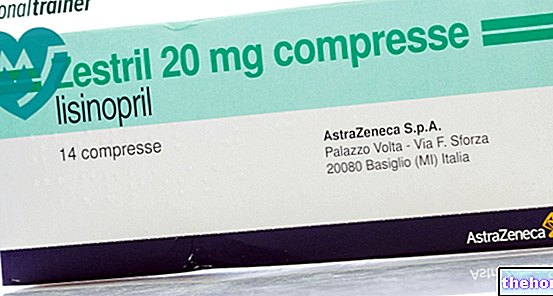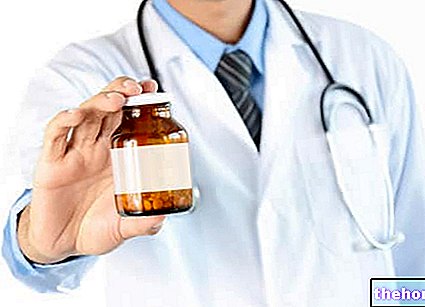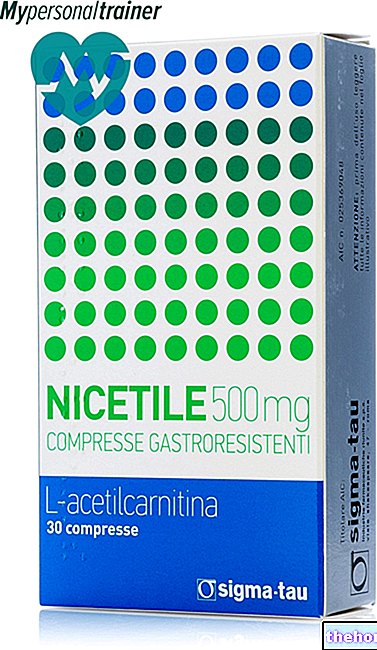Active ingredients: Hyaluronic acid
HYALGAN 20 mg / 2 ml solution for injection intra-articular use
Why is Hyalgan used? What is it for?
PHARMACOTHERAPEUTIC CATEGORY
Other drugs for diseases of the musculoskeletal system
THERAPEUTIC INDICATIONS
Gonarthrosis of mild and medium severity.
Contraindications When Hyalgan should not be used
- Hypersensitivity to the active substance or to any of the excipients.
- history of chicken protein allergy.
- Patients with severe liver disease.
Precautions for use What you need to know before taking Hyalgan
- The use of disinfectants based on quaternary ammonium salts is not recommended as, in the presence of hyaluronic acid, they can give rise to the formation of precipitates.
- The intra-articular infiltration must be performed by expert medical personnel, in adequate aseptic conditions and observing the technical standards envisaged for this method of administration.
- Particular precautions must be taken in patients with infections in place close to the one to be infiltrated, in order to avoid the possibility of onset of bacterial arthritis.
- Before intra-articular infiltration, patients should be carefully examined to ascertain the presence of signs of acute inflammation. In this case, the physician should evaluate whether or not to proceed with the infiltration.
- In the presence of joint effusion, aspiration is recommended before injecting HYALGAN.
- It is recommended not to subject the infiltrated joint to excessive loads in the hours immediately following infiltration.
Interactions Which drugs or foods can modify the effect of Hyalgan
Hyaluronic acid interacts with some local anesthetics, extending the anesthesia time.
Warnings It is important to know that:
Use in pregnancy and during lactation
Although no embryotoxic or teratogenic effects have emerged in animal experiments, the use of the drug in pregnancy and during lactation is to be reserved, in the opinion of the doctor, for cases of absolute necessity and after careful evaluation of any risks compared to the expected benefit.
Effects on ability to drive and use machines
The drug does not affect the ability to drive and use machines.
Dosage and method of use How to use Hyalgan: Dosage
As a guide, unless otherwise advised by the doctor, intra-articular infiltrate once a week 2 ml of HYALGAN (20 mg) for 5 weeks.
Overdose What to do if you have taken too much Hyalgan
There are no known effects to be attributed to Hyalgan overdose.
Side Effects What are the side effects of Hyalgan
Injection site reactions such as pain, swelling / effusion, warmth, redness, itching, synovitis have been reported rarely. Generally, they were short-lived and resolved spontaneously within a few days by resting the limb and applying ice; only sporadically did they take on characters of greater intensity and duration.
In the presence of objective signs indicative of an exacerbation of the underlying chronic inflammatory process, the administration of hyaluronic acid has caused, in rare cases, an exacerbation of the clinical picture.
Extremely rare cases of intra-articular infection (see "Precautions for use").
Very rare cases of systemic hypersensitivity reaction (skin rash, urticaria, pruritus) and only exceptionally cases of anaphylaxis have been reported, none with a fatal outcome.
Compliance with the instructions contained in the package leaflet reduces the risk of undesirable effects.
It is important to inform the doctor or pharmacist of any undesirable effect, even if not described in the package leaflet.
Expiry and Retention
Check the expiration date indicated on the package.
The expiry date indicated on the package refers to the product in intact packaging, correctly stored.
Warning: do not use the medicine after this date.
Storage rules: Do not store above 25 ° C; do not freeze.
Keep this medicine out of the reach and sight of children
Composition and pharmaceutical form
COMPOSITION
Active ingredient: Hyaluronic acid sodium salt 20 mg
Excipients: sodium chloride, monobasic sodium phosphate dihydrate, dibasic sodium phosphate dodecahydrate, water for injections q. b. to 2 ml
PHARMACEUTICAL FORM AND CONTENT
Solution for injection for intra-articular use
1 and 5 vials of 20 mg / 2 ml
1 - 3 - 5 pre-filled 20 mg / 2 ml syringes
Source Package Leaflet: AIFA (Italian Medicines Agency). Content published in January 2016. The information present may not be up-to-date.
To have access to the most up-to-date version, it is advisable to access the AIFA (Italian Medicines Agency) website. Disclaimer and useful information.
01.0 NAME OF THE MEDICINAL PRODUCT
HYALGAN 20 MG / 2 ML SOLUTION FOR INJECTION FOR INTRA-ARTICULAR USE
02.0 QUALITATIVE AND QUANTITATIVE COMPOSITION
Active principle
Hyaluronic acid sodium salt 20 mg
For excipients see 6.1.
03.0 PHARMACEUTICAL FORM
Solution for injection for intra-articular use
04.0 CLINICAL INFORMATION
04.1 Therapeutic indications
Gonarthrosis of mild and medium severity.
04.2 Posology and method of administration
As a guide, unless otherwise advised by the doctor, intra-articular infiltrate once a week 2 ml of HYALGAN (20 mg) for 5 weeks.
04.3 Contraindications
- Hypersensitivity to the active substance or to any of the excipients;
- history of allergy to chicken proteins;
- patients with severe liver disease.
04.4 Special warnings and appropriate precautions for use
- We do not recommend the use of disinfectants based on quaternary ammonium salts as, in the presence of hyaluronic acid, they can give rise to the formation of precipitates.
- The intra-articular infiltration must be performed by expert medical personnel, in adequate aseptic conditions and observing the technical standards envisaged for this method of administration.
- Particular precautions must be taken in patients with infections in place close to the one to be infiltrated, in order to avoid the possibility of onset of bacterial arthritis.
- Before intra-articular infiltration, patients must be carefully examined to ascertain the presence of signs of acute inflammation. In this case, the physician must evaluate whether or not to proceed with the infiltration.
- In the presence of joint effusion, aspiration is recommended before injecting HYALGAN.
- It is recommended not to subject the infiltrated joint to excessive loads in the hours immediately following infiltration.
04.5 Interactions with other medicinal products and other forms of interaction
Hyaluronic acid interacts with some local anesthetics, extending the anesthesia time.
04.6 Pregnancy and lactation
Although no embryotoxic or teratogenic effects have emerged in animal experiments, the use of the drug in pregnancy and during lactation is to be reserved, in the opinion of the doctor, for cases of absolute necessity and after careful evaluation of any risks compared to the expected benefit.
04.7 Effects on ability to drive and use machines
HYALGAN does not affect the ability to drive or use machines.
04.8 Undesirable effects
Injection site reactions such as pain, swelling / effusion, warmth, redness, itching, synovitis have been reported rarely. Generally, they were short-lived and resolved spontaneously within a few days by resting the limb and applying ice; only sporadically did they take on characters of greater intensity and duration.
In the presence of objective signs indicative of an exacerbation of the underlying chronic inflammatory process, the administration of hyaluronic acid has caused, in rare cases, an exacerbation of the clinical picture.
Extremely rare cases of intra-articular infection (see section 4.4).
Very rare cases of systemic hypersensitivity reaction (skin rash, urticaria, pruritus) and only exceptionally cases of anaphylaxis have been reported, none with a fatal outcome.
04.9 Overdose
No cases of overdose have been reported.
05.0 PHARMACOLOGICAL PROPERTIES
05.1 Pharmacodynamic properties
Pharmacotherapeutic group: "Other drugs for diseases of the musculoskeletal system"
ATC code: M09AX01.
Hyaluronic acid, a natural polymer belonging to the class of glycosaminoglycans (acid mucopolysaccharides), is an important component of all extracellular matrices and is present in particularly high concentrations in cartilage and synovial fluid. The active ingredient of the HYALGAN specialty is a fraction of high molecular weight hyaluronic acid, with a high degree of purity and molecular definition, which possesses particular biochemical, physico-chemical and pharmacological properties.
The intra-articular administration of HYALGAN in the arthritic joints induces a normalization of the viscoelasticity of the synovial fluid and an activation of the tissue repair processes at the level of the articular cartilage.
In some experimental models an anti-inflammatory and analgesic activity of hyaluronic acid has also been highlighted. These properties translate into an improvement in joint function and in a control of objective and subjective symptoms related to arthrosis disease.
05.2 Pharmacokinetic properties
The exogenous hyaluronic acid, being a substance widely present in the organism, is physiologically metabolized after parenteral administration by integrating into the common metabolic pathways of the hexoses.
The results of the studies performed intra-articularly in dogs and rabbits, after single and repeated administration, indicate that hyaluronic acid is rapidly distributed in the joint tissues and remains there for a long time: the marked product is in fact found in the synovial membrane already after 2 h from administration and remains there for up to 7 days; the maximum concentration of marked hyaluronic acid is found in the synovial fluid and then, decreasing, in the joint capsule, in the ligaments and in the adjacent muscle. radioactivity is found in the liver, kidneys, bone marrow and lymph nodes, elimination is mainly renal.
A study performed via i.v. on pregnant rats it signals the presence of radioactivity in the placenta and in various organs of the fetus.
05.3 Preclinical safety data
Non-clinical data reveal no risk for humans based on conventional studies of safety pharmacology, repeated dose toxicity, genotoxicity, carcinogenic potential, reproductive toxicity.
06.0 PHARMACEUTICAL INFORMATION
06.1 Excipients
Sodium chloride - Monobasic sodium phosphate dihydrate - Dibasic sodium phosphate dodecahydrate - Water p.p.i.
06.2 Incompatibility
Disinfectants based on quaternary ammonium salts, in the presence of hyaluronic acid, can give rise to the formation of precipitates.
There are no chemical-physical incompatibilities with drugs commonly used in intra-articular therapy, such as corticosteroids.
06.3 Period of validity
3 years
06.4 Special precautions for storage
Store at a temperature not exceeding 25 ° C; do not freeze.
06.5 Nature of the immediate packaging and contents of the package
Type I colorless glass vial, elastomer (latex-free) mushroom cap with flip-off plastic lid
- 1 vial of 20mg / 2ml
- 5 vials of 20 mg / 2 ml
Sterile 2.25 ml syringe in colorless borosilicate glass type I according to Ph. Eur., Closed with a sterile cap in elastomeric material (latex-free) and safety adapter for locking the needle.
- 1 single use 20 mg / 2 ml pre-filled sterile syringe.
- 5 single use pre-filled sterile 20 mg / 2 ml syringes
- 3 single use 20 mg / 2 ml pre-filled sterile syringes
06.6 Instructions for use and handling
Vial: remove the plastic lid and the elastomer cap and withdraw the product to be injected with a syringe.
Syringe: remove the elastomer cap and screw the needle onto the syringe, avoiding pressure on the plunger. Check that the needle is perfectly screwed onto the adapter Luer Lock Adapter (LLA). Do not overtighten: this can cause the LLA adapter to detach from the syringe.
Unused product and waste derived from this medicine must be disposed of in accordance with local legal requirements.
07.0 MARKETING AUTHORIZATION HOLDER
FIDIA Farmaceutici S.p.A. - Via Ponte della Fabbrica, 3 / A - 35031 Abano Terme (PD)
08.0 MARKETING AUTHORIZATION NUMBER
- 1 vial of 20mg / 2ml A.I.C. 026354011
- 5 vials of 20 mg / 2 ml A.I.C. 026354023
- 1 pre-filled syringe of 20 mg / 2 ml A.I.C. 026354035
- 5 pre-filled syringes of 20 mg / 2 ml A.I.C. 026354047
- 3 pre-filled syringes of 20 mg / 2 ml A.I.C. 026354050
09.0 DATE OF FIRST AUTHORIZATION OR RENEWAL OF THE AUTHORIZATION
- 1 vial of 20mg / 2ml: 07.04.1986 / 01.06.2005
- 5 vials of 20 mg / 2 ml 23.03.2004 / 01.06 / 2005
- 1 pre-filled syringe of 20 mg / 2 ml 23.03.2004 / 01.06.2005
- 5 pre-filled syringes of 20 mg / 2 ml 23.03.2004 / 01.06.2005
- 3 pre-filled 20 mg / 2 ml syringes: 23.01.2013
10.0 DATE OF REVISION OF THE TEXT
23/01/2013

